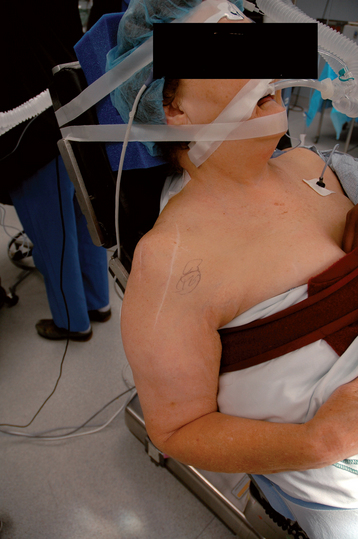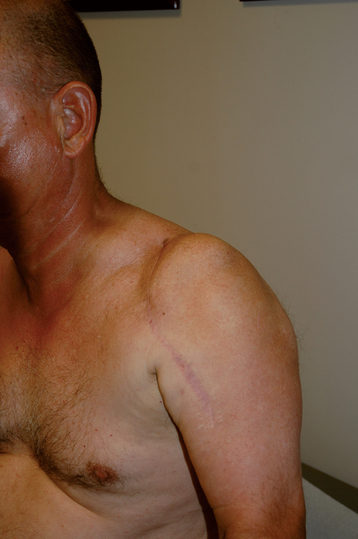CHAPTER 36 Preoperative Planning, Imaging, and Special Tests
Revision shoulder arthroplasty is more challenging overall than primary shoulder arthroplasty. Preoperative planning for a revision arthroplasty case is critically important and is initiated as soon as revision arthroplasty is being considered; it should never be an afterthought the morning of surgery. Preoperative planning for revision shoulder arthroplasty is similar to, albeit more complex than, planning for primary shoulder arthroplasty and consists of reviewing the patient’s clinical history and physical examination, radiographs, and secondary imaging studies, as well as any special tests obtained. This chapter reviews our approach to preoperative planning for revision shoulder arthroplasty.
CLINICAL HISTORY AND EXAMINATION
All of our patients undergo a thorough shoulder examination, much of which is detailed in Chapter 7. The visual appearance of the shoulder yields useful information in candidates for revision shoulder arthroplasty. The presence and location of surgical scars are noted. The preoperative plan should include whether all or part of a previous skin incision site is to be used or whether a completely new incision is to be created (Fig. 36-1). In thin patients, anterior superior escape of a prosthetic humeral head caused by anterior superior rotator cuff deficiency may be obvious (Fig. 36-2). Special attention should be paid to the condition of the deltoid, especially if it has previously been surgically violated (Fig. 36-3). Atrophy of the supraspinatus and infraspinatus should be noted as well (Fig. 36-4).
Both active and passive mobility is recorded, as detailed in Chapter 7. Special attention should be paid to evaluation of the deltoid muscle. If deltoid contractility appears to be compromised, further evaluation with electromyography and nerve conduction studies should be performed before revision shoulder arthroplasty.
The integrity of the rotator cuff is tested (see Chapter 7). Details of this examination are of paramount importance in preoperative planning for revision surgery. Although a minor rotator cuff deficiency such as an isolated supraspinatus tendon tear may have little influence on preoperative planning, larger rotator cuff tears (two-, three-, and four-tendon tears), especially when coupled with static or dynamic glenohumeral instability, may change the type of revision prosthesis to be inserted (reverse instead of unconstrained).
Stay updated, free articles. Join our Telegram channel

Full access? Get Clinical Tree












